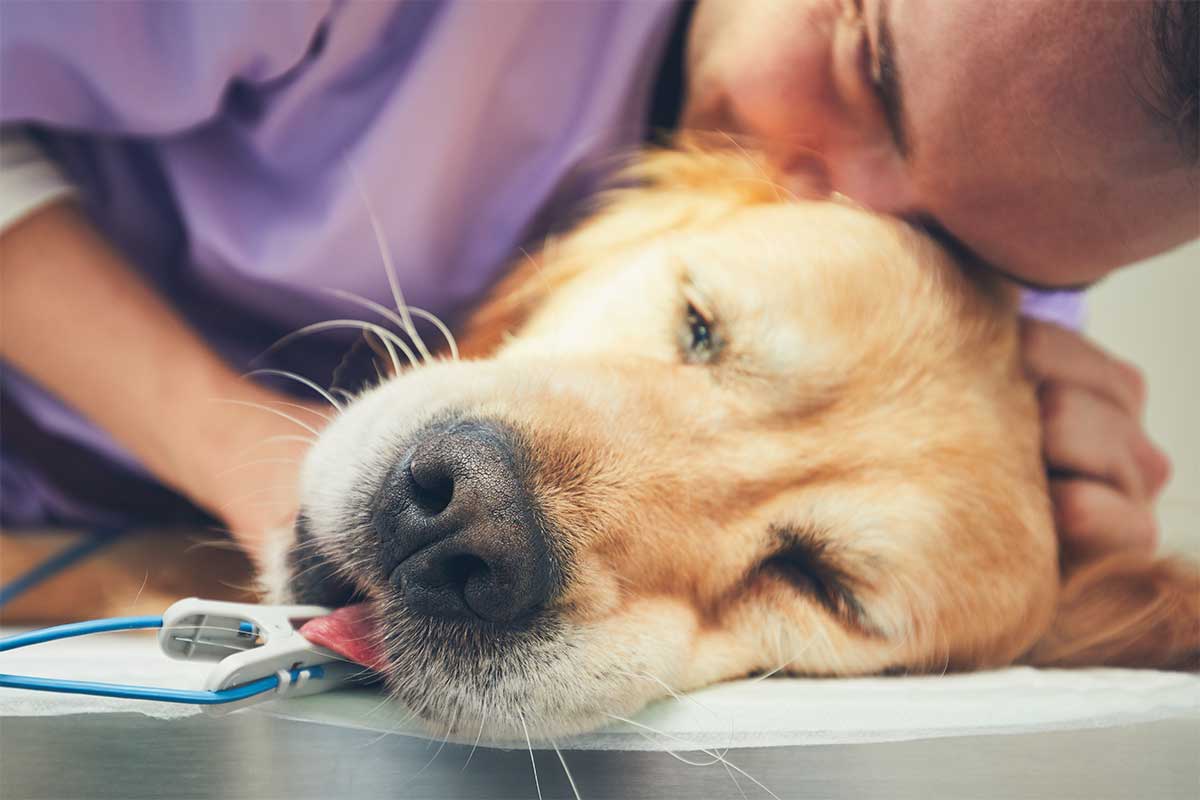Feeling a little more tired as you age? A little out of breath? The same is likely true for your aging dog or cat. The fact is that organs change with age, and those changes can affect not only day-to-day activities, but also the way our pets respond to anesthesia. Changes related to aging can make the body less resilient to changes caused by anesthesia. In the senior patient, breathing may not be as efficient as in a younger patient, the heart may not work as effectively, and the body temperature may decrease more rapidly.
But that doesn’t mean that anesthesia should be avoided for older pets. In fact, it may be necessary more often in aged animals because conditions such as bad dental disease and growths that need to be removed occur more commonly with age. Don’t ask senior dogs or cats to live with infected, painful teeth or bleeding, itchy growths just because you are afraid of having them anesthetized. Leaving these conditions untreated is not an appropriate quality of life choice for your pet. Instead, ask veterinarians what precautions they take to ensure safe anesthesia for senior pets. Precautions should start before the anesthetic procedure is even scheduled and should continue through the time that you get your pet safely home.
Pre-Anesthetic Testing
Before the anesthetic procedure, older pets need certain blood tests, urine tests, and maybe even x-rays or ultrasound. These tests are used to identify disease that might negatively affect safe anesthesia. If disease is discovered during testing, your veterinarian may want to delay anesthesia while treating that disease or may want to do more tests. Regardless, the goal is to make your pet as healthy as possible before the anesthetic episode. If no diseases are identified, or if the identified disease is under control, your pet will likely get a green light to proceed with anesthesia.
Calm Starts At Home
On the day of the anesthetic procedure, your veterinarian may ask you to give a calming medication and maybe even pain medication while the pet is still at home. Just like aging humans, aging pets may be more likely to be anxious and confused, or they may have painful conditions such as arthritis. Controlling these conditions prior to anesthesia is common in human medicine and is a focus of the Fear Free veterinary teachings. Keeping patients calm and comfortable makes anesthesia safer!
Once at the hospital, your pet will be handled with lots of tender loving care (he’s earned it!) and will likely receive more pain medication and a dose of a more powerful sedative to make sure he is not stressed by the environment. The pet will then be anesthetized.
The anesthesia team will monitor vital signs, support normal body function, and minimize pain during the entire procedure. To do this, they place heart, blood pressure, and breathing monitors on the pet, and check them regularly. They also administer intravenous fluids to help maintain blood pressure, hydration and body temperature, as well as provide quick administration of pain medication or emergency drugs. A warming blanket or a heated surgical table help the pet stay warm. Throughout the procedure a veterinary nurse will monitor your pet’s vital signs–just like the care you would receive if you were being anesthetized.
After the procedure, the team will remain attentive to your pet in recovery. As the pet wakes up, the warming blankets and any other support your pet needs will be maintained, and pain will again be addressed, just as it is in human medicine. When your pet is fully awake and ready to go home, he or she may be discharged with medications for you to administer. Those drugs often include pain medications. Be sure to administer the pain medications, even if your pet doesn’t show pain. Animals are very good at hiding pain, and uncontrolled pain is not only unfair to your pet, it can also delay the healing process and even cause further complications such as unwillingness to eat.
Bottom line: Don’t let aging pets suffer in silence when they have something that could be corrected during anesthesia. Do be an advocate for your pet and talk to your veterinarian about your concerns and whether she takes these important safety precautions.
This article was reviewed/edited by board-certified veterinary behaviorist Dr. Kenneth Martin and/or veterinary technician specialist in behavior Debbie Martin, LVT.








